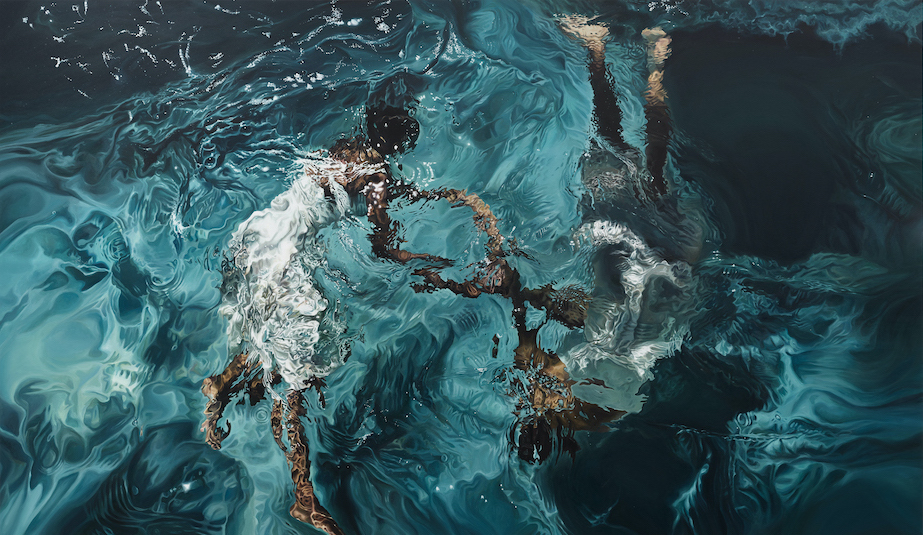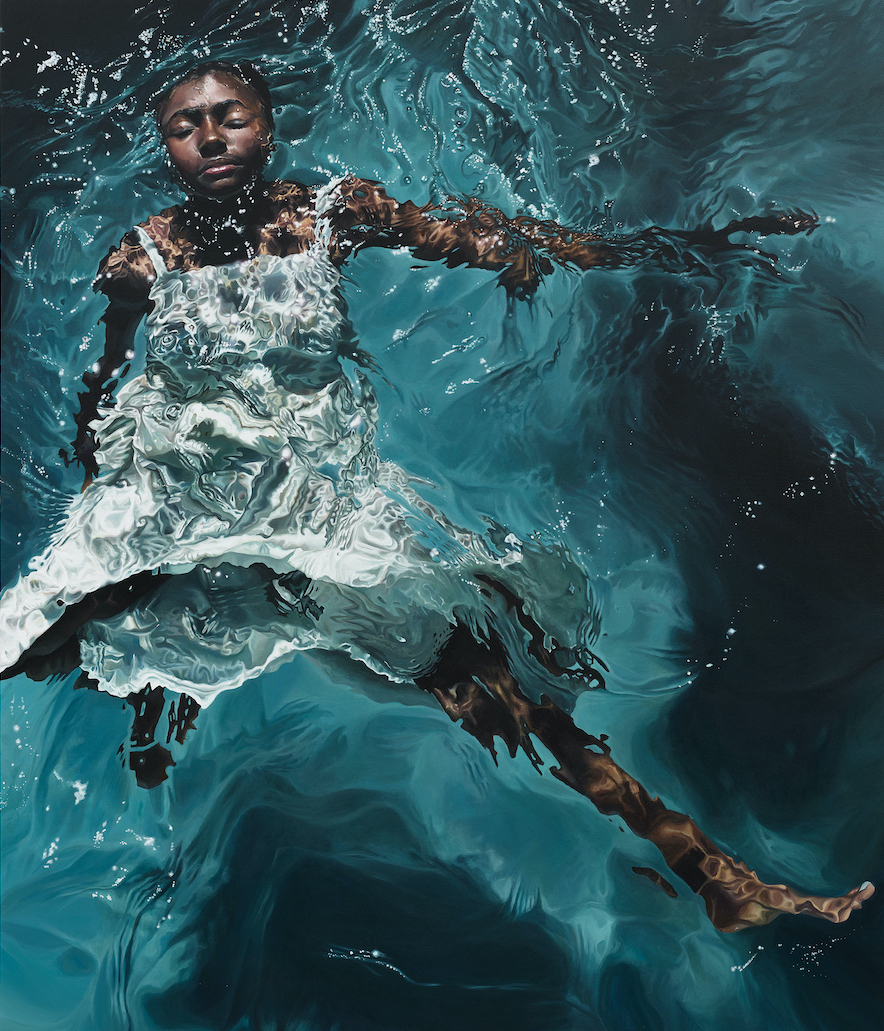Your cart is currently empty!
Fire and Water The Beautiful Tragedies of Calida Rawles

In 2004 Calida Rawles moved from New York to Los Angeles, and she found an art scene brimming with life. Trained as an artist, she longed to become part of that world, and asked herself whether she would become a collector or a painter. She decided to give herself the chance to be a painter and made an agreement with her husband that she would take a year to find her way, without any expectations of financial return. She rented a studio—the studio we are in now, in a repurposed industrial building in Inglewood—and she began to explore and experiment.
Among the first works to emerge were self-portraits of herself crammed into an acrylic box. She still has that box—it’s in a corner of the studio, and now holds snacks and a small refrigerator to keep the drinks cool on this hot, hot summer day. “I pressed myself against this box, took pictures of myself when I was pregnant with my last baby,” she says. “Then I painted myself getting out of the box and turning into water. Those are the first ones using water as this metaphor of my release.”
Rawles was born in Wilmington, DE, to working-class parents. “Artistic expression was big in my family,” she recalls. Her mother was happy to buy art supplies for her kids, and Calida took her first painting lessons as a child. Later, she majored in studio art when she attended Spelman College in Atlanta. She wanted to continue and applied to New York University, partly because she thought her parents would be pleased that she was going to such a prestigious school.
It ended up in discouragement. “I had been so nurtured at Spelman, and then I went there [NYU], and it was a very different, tough experience.” She’s fine with how things turned out, she says, but “before I went to grad school, I think I needed to be a little bit more mature. I needed to know who I was more and have a better understanding of my voice.” It was also a time when some instructors were critical of figurative work, and questioned her focus on the Black body.
Today Rawles has clearly found herself—and gallerists and collectors have found her. In 2020 she had her first solo exhibition, “A Dream for My Lilith,” at Various Small Fires.
Rawles says she’s often more influenced by literature than by other art, and this show explored the myth of Lilith, said to be the first wife of the Biblical Adam. The artist separated Lilith from her traditional reputation of failed womanhood and moved her representation towards the notion of strength and liberation embodied by Black women and girls. Those paintings were in the main gallery, while the smaller gallery featured studies done for Ta-nehisi Coates’ book, The Water Dancer (2019). Unfortunately, that show closed early due to the COVID shutdown, but shortly thereafter Rawles was picked up by Lehmann Maupin in New York. The latter gallery featured her exhilarating portrait of a woman floating in blue water, The Way of Time, at this year’s Frieze LA.
Water is a pervasive leitmotif in Rawles’ work. In her paintings people are often seen floating or swimming in a watery environment, and they are nearly always clothed. About the time Rawles got her studio, she also began to take swimming lessons. She found that she loved both the sensation of swimming and being able to see how water captures and refracts light, and the shifting net patterns it forms. Her figures are radiant, sometimes smiling, as the subject of The Way of Time is, or sometimes with their eyes closed in meditation or serenity.

These days Rawles works in acrylics, although she has recently done some pastels. She still takes photographs, sometimes by the hundreds, to prepare for a painting. Most of the subjects are friends and family, and she photographs them in pools. Later she goes through the photographs, selecting which elements to use, such as how legs bend and become wavy when you view them through the water. As a Black woman, she is keenly aware of the politics of the Black body, and equally conscious of how lagging this country is in the treatment of Black people and of women. The ease and the confidence with which her figures navigate water are powerful statements about being in the world—we are here, we belong here, we thrive.
Rawles likes to work large, but often makes a smaller study first to work out the details. The one on her easel now features her youngest daughter, as if she were being shot out of a cannon—head forward and one arm behind her. Rawles has mentioned Degas before, and I say this one reminds me of Degas’ young ballet dancer—the bronze the Norton Simon has a version of. “I see that, too,” she says. “I think that it will be inevitable that people make associations with that work.”
In a 2021 essay for Artnet News, Roxane Gay praised Rawles’ alternative look at Black suffering. “When I first saw Calida Rawles’ 2021 painting High Tide, Heavy Armor, I felt, as I often do when I am experiencing great art, that she was offering a different way of bearing witness. In the painting, a Black man floats in crystal blue water. The photorealism of the painting is uncanny—the smoothness and glowing brown of the man’s skin, the range of blues of the water, the reflection of the sun,” Gay wrote. “There is no one near him to question or challenge his right to be in these waters. He doesn’t have to justify or explain his leisure.” The painting is a visual elegy for Kurt Reinhold, a Black man who was the father of a child at Rawles’ daughter’s daycare. In 2020 in San Clemente, he was stopped by sheriff’s deputies on suspicion for jaywalking, and during the ensuing struggle, he was shot and killed.
Such tragedies are addressed in Rawles’ work; she doesn’t shy away from sociopolitical issues. However, the painting itself is quite beautiful, as Gay says, and is in its way a celebration of life. “I want my work to inspire others,” says Rawles. “I try to be the best version of myself as I can be—I’m not always successful at it, but I’ll try as much as I can.”
This fall Rawles will be featured at the Lehmann Maupin booth at Frieze London (Oct. 12–16), and she will have a solo at their New York location in fall 2023. The large mural version of The Way of Time, made with a team of assistants, is now on an exterior wall on a walkway at Hollywood Park in Inglewood.